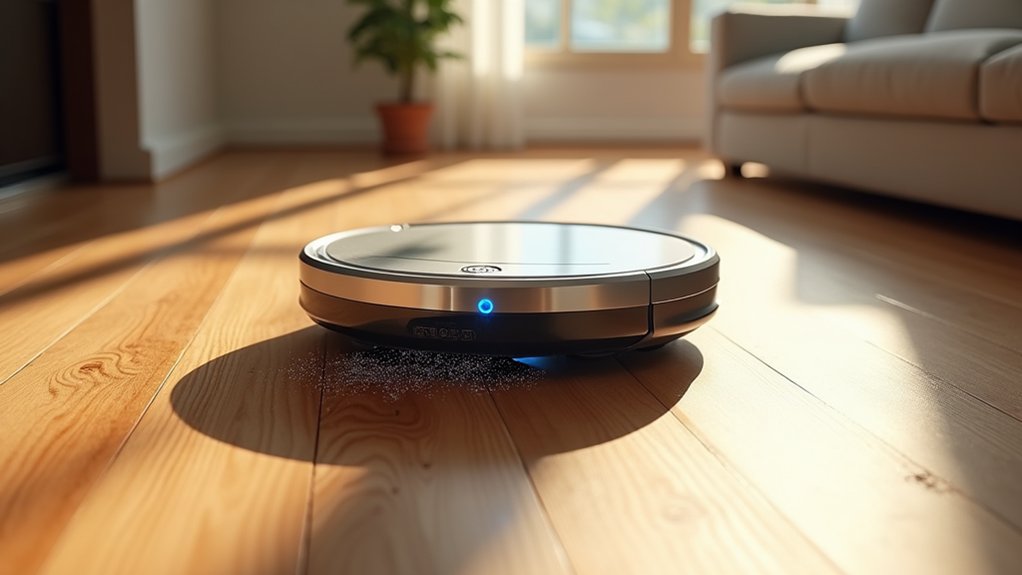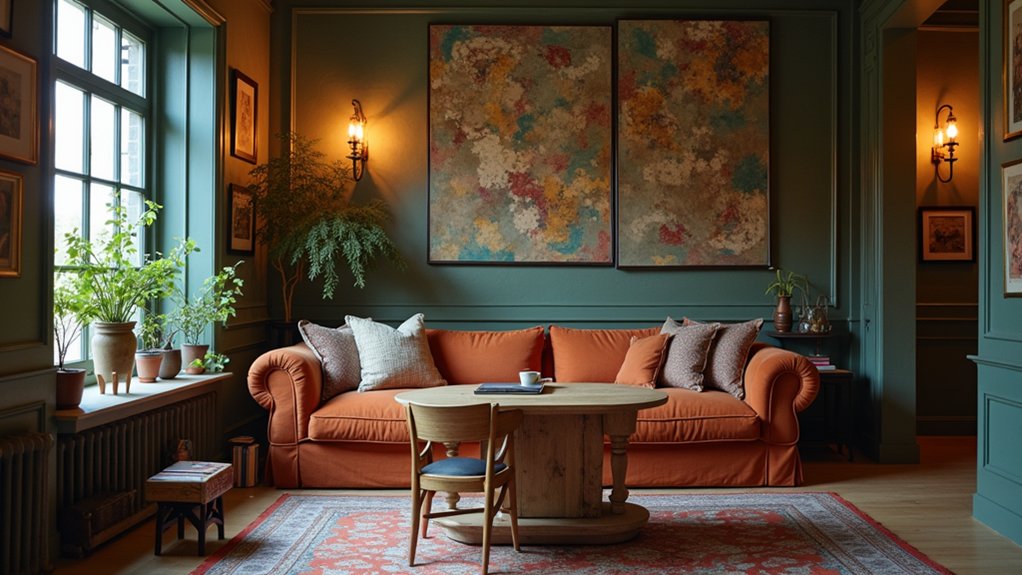Beneath layers of worn polyurethane and decades of accumulated grime, vintage hardwood floors harbor untapped potential that skilled restoration can reveal. While traditional refinishing breathes new life into these historic surfaces, an emerging trend transforms ordinary wood planks into sophisticated patterns that mimic expensive tile installations through strategic staining and precise finishing techniques.
Vintage hardwood floors conceal sophisticated potential beneath decades of wear, awaiting transformation through skilled restoration techniques.
The transformation process begins with meticulous assessment and preparation, examining the floor for scratches, water stains, and structural damage. Professional restorers evaluate whether screening or complete sanding suits the floor’s condition, paying special attention to historical features like hand-hewn edges or inlaid patterns. Matching materials often requires sourcing reclaimed wood from similar periods to maintain authenticity while creating the desired tile-like appearance. Identifying soft spots early prevents costly surprises during the restoration process. Additionally, understanding material interactions is crucial for ensuring the longevity of the finished floor.
Creating the illusion of tile demands careful planning and execution beyond standard refinishing methods. After thorough vacuuming and cleaning with bone-dry rags to prevent grain raising, craftsmen fill cracks and separated seams with wood putty, allowing overnight drying.
The sanding phase requires particular finesse—starting with coarser grits and progressing to finer ones while avoiding over-sanding that could damage irreplaceable antique wood. For century-old floors with multiple finish layers, professionals often employ drum sanders to efficiently remove decades of accumulated coatings before refining edges with palm and belt sanders.
The magic happens during the staining and finishing stages, where precise tape placement and multiple stain applications create geometric patterns resembling marble, travertine, or ceramic tile. Professional refinishers apply contrasting stains to designated sections, building layers that add depth and dimension.
Between each application, light sanding with pole sanders guarantees smooth transitions while maintaining crisp pattern lines. Multiple coats of polyurethane seal the artistic transformation, with meticulous dust removal between applications preventing particles from marring the finish.
The process demands professional expertise, as specialized tools and historic preservation knowledge prove crucial for achieving convincing results while maintaining the floor’s structural integrity and value.
Regular maintenance through periodic screening extends the life of these artistic floors, preserving both their beauty and the illusion of luxury tile. This innovative approach offers homeowners a cost-effective alternative to tile installation while honoring the original craftsmanship of vintage wood floors, creating stunning focal points that merge historical charm with contemporary design sensibilities.








